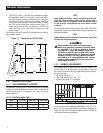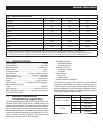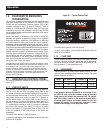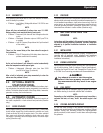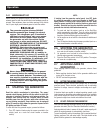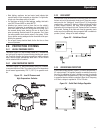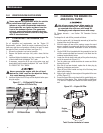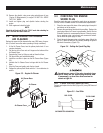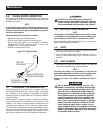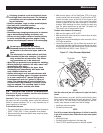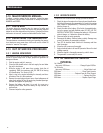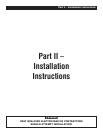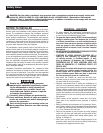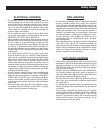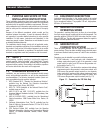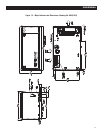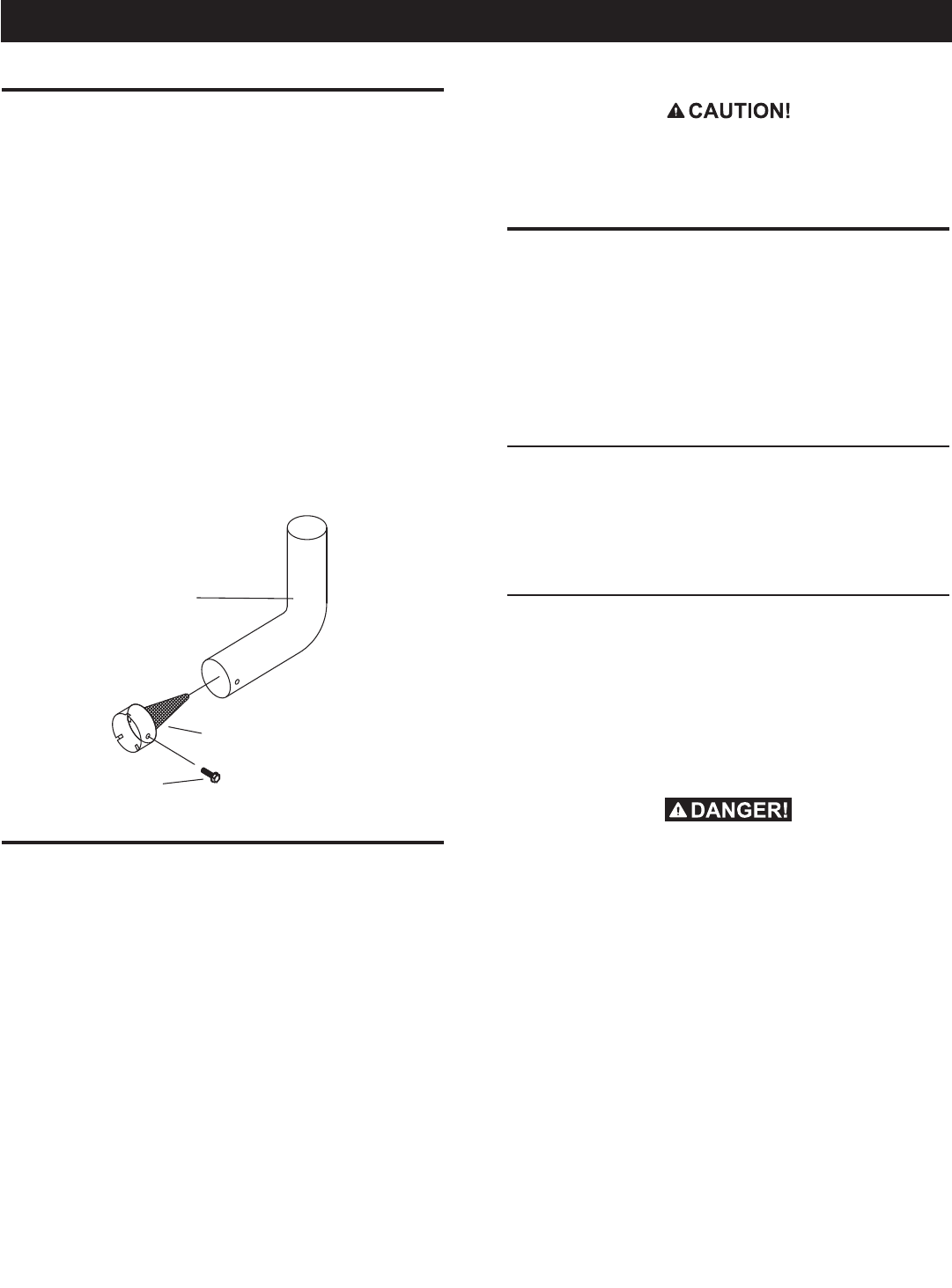
14
3.6 CLEAN SPARK ARRESTOR
The engine exhaust muffler has a spark arrestor screen. Inspect and
clean the screen every 200 hours of operation or once each year,
whichever comes first.
NOTE:
If using the generator on any forest-covered, brush-covered or
grass-covered unimproved land, it must equipped with a spark
arrestor. The spark arrestor must be maintained in good condi-
tion by the owner/operator.
Clean and inspect the spark arrestor as follows:
Remove the screen by removing the screw.•
Slide the spark arrestor screen out from the tail pipe.•
Inspect screen and replace if torn, perforated or otherwise •
damaged. DO NOT USE a defective screen. If screen is not
damaged, clean it with commercial solvent.
Replace the screen and the screw.•
Figure 3.6 - Spark Arrestor
RETAINING
SCREW P/N 056892
SPARK ARRRESTOR
SCREEN P/N 089680
TAILPIPE
P/N 0G5857
3.7 CLEANING THE GENERATOR
Keep the generator set as clean and dry as possible. Protect the
unit against excessive dust, dirt, corrosive vapors, road splash,
etc. Permitting dirt and moisture to accumulate on generator
windings will have an adverse effect on the insulation resistance
of those windings.
When moisture is allowed to remain in contact with windings,
some of the moisture will be retained in voids and cracks in the
insulation. This causes a reduced insulation resistance and will
eventually cause problems. Dirt will make the problem worse,
since dirt tends to hold moisture in contact with windings. Salt (as
from sea air) also will worsen the problem since it tends to absorb
moisture from the air. Salt and moisture, when combined, form a
good electrical conductor which is detrimental to the generator.
n
Do NOT use a forceful spray of water to
clean the generator. Water will enter the gen-
erator interior and cause problems, and may
also contaminate the generator fuel system.
3.8 BATTERY MAINTENANCE
NOTE:
This generator is not equipped with an internal battery charger.
It is intended for use in systems where an external battery char-
ger is installed by the RV O.E.M. or an aftermarket installer.
All lead-acid batteries will discharge when not in use. The generator
battery should be inspected as follows:
3.8.1 WEEKLY
Inspect the battery posts and cables for tightness and corro-•
sion. Tighten and clean as necessary.
Check the battery fluid level of unsealed batteries and, if nec-•
essary, fill with Distilled Water Only. Do not use tap water in
batteries.
3.8.2 EVERY SIX MONTHS
Have the state of charge and condition checked. This should be •
done with an automotive-type battery hydrometer.
NOTE:
Servicing of the battery is to be performed or supervised by
personnel knowledgeable of batteries and the required precau-
tions. Keep unauthorized personnel away from batteries.
Damage will result if the battery connections are made in
reverse.
Do not dispose of the battery in a fire. The
battery is capable of exploding. Storage bat-
teries give off explosive hydrogen gas. This
gas can form an explosive mixture around
the battery for several hours after charging.
The slightest spark can ignite the gas and
cause an explosion. Such an explosion can
shatter the battery and cause blindness or
other injury. Any area that houses a storage
battery must be properly ventilated. Do not
allow smoking, open flame, sparks, or any
spark producing tools or equipment near the
battery. Discharge static electricity from body
before touching the battery by first touching
a grounded metal surface.
Maintenance



